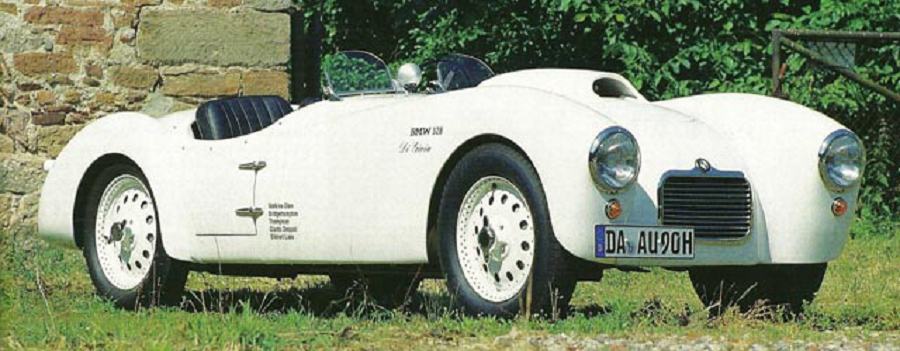
——————————–
Note: This is a multi-part story on the 1952 Tobin BMW 328 Special. Click here to review all articles in this series.
——————————–
Hi Gang…
In our never-ending search for this history of wonderful and interesting fiberglass sports cars, the path we follow is circuitous – at best. And the less predictable the experience and more surprises we get along the way – the better – as follows:
- In our first article we set out to research what we thought then was the “fiberglass bodied” BMW 328 Tobin Special
- By the second article we had found out that the body was made from aluminum but we had found a great story in terms of early American bodied specials
- In the third article we heard from one of the DiGioia family members with more history and information about the car – Kelley DiGioia
And now we are onto the fourth article about this car – and a fifth one is in the planning. What a great trip this has been so far!
I hope you enjoy the road less traveled as much as I do
Off we go….
Kelley DiGioia: Tobin BMW Special Researcher Extraordinaire
Kelley DiGioia has taken the lead on researching the Tobin BMW 328 special – and has pulled away from myself and the rest of the pack. And wonderfully, in doing so, she found that the car still exists and has been restored. What a researcher Kelley has turned out to be! Here’s what she recently shared with me concerning how she found the information:
Geoff…
Recently I was googling different phrases relating to my last name and the car, and came across a website selling back issues of the magazine. Next to June 2002 and a photo of the cover, there was a brief description of the contents. “Di Gioia Bodied 328” caught my eye and I ordered it on a whim expecting, at most, a short blurb. I was so happily surprised with this article.
I contacted the magazine hoping someone could put me in contact with the author, Jerry Sloniger, but unfortunately he passed away a few years ago and the editor couldn’t help me any further, as nice as she was.
Kelley DiGioia
So…let’s have a look at what Kelly DiGioia found.
Take it away Kelley!
DiGioia’s Different 328
By Jerry Sloniger
Bimmer Magazine: June 2002
The BMW 328 is a rare beast in more ways than its limited production numbers alone would suggest. In a world where the term “legend” is tossed around far too casually, the 328 laid an honest cornerstone for its legendary status.
The scene was the feared and famous Nürburgring, the date June 14, 1936, the car the brand-new 328 and the driver motorcycle champion Ernst Henne. The car’s sleek shape and curious OHV head were fascinating enough on their own, but Henne iced the cake by winning the 328 the first time out. Many more victories would follow for both factory drivers and privateers, although Munich didn’t allow buyers into the game for a full year. All those vintage photos of wall-to-wall 328 grids lead us to see the roadster as the ultimate owner-driven sporting weapon, but the BMW had originally conceived it as a works racer.
It was such a good race car, in fact, that 328s were still standing up to all comers in the mid-‘50s twenty years after they first turned a wheel in anger. And although we tend to think of the 328 as a predominantly European racing phenomenon, a few made their way onto the American sports car racing scene. Against Jaguar XK 120s, Ferraris and Astons – as well as new exotics from Jowett, Lea-Francis, Frazer Nash, Siata and Simca – well-driven 328s were still capable of taking the odd trophy.
The Di Gioia is one of the 150 BMW 328 sports racers to survive out of the 400 built between 1937 and 1940 (plus two works cars in 1936 and a likely 59 extra chassis). It shares the basic data with the rest of those cars: power from a 1,971cc straight six (although the original registration book quotes 1,969cc and race lists in the ‘50s claim 1,953cc), official output quoted as 80 hp (although reports hinted at up to 100), engine set in the nose of a two-seater body, a 94.6 inch wheelbase, weight as originally registered of 1,765 lbs. (or 1,830, depending on your source). Most agree, at least, that the package cost a hefty 7,400 Reichmarks, although the papers for the June 3, 1939 sale of the chassis number 85414 – the Di Gioia 328 – note a wartime “rubber surcharge” of 43 RM as well.
This same original kraftfahrzeugbrief (registration booklet) lists Johann Chlupacek in the north Moravian town of Jægerndorf as first owner. Chlupacek owned a textile factory and had a garage full of interesting automobiles; this 328 in its original BMW body was actually registered to his firm. Since Germany controlled Czechoslovakia by 1939, that first entry was stamped with the Reichs Eagle.
In the final, chaotic days of World WarII, Chlupacek’s brother attempted to flee Czechoslovakia in the BMW and was neither heard from nor seen again. The car somehow ended up in the hands of one Hans Güntherr, a teacher in Lofer, Austria, who is shown in the logbook as the registered owner as of June 4, 1945, a mere two days before the war ended. Güntherr’s residence is given as the Lindner Gasthof (Inn).
How Güntherr got the car remains a bit of a mystery. When its current owner, Dieter Aumann of Babenhausen, Germany, visited Lofer, he found the Lindner Gathof run by Güntherr’s brother-in-law. He was told how this very 328 had saved Güntherr’s life by providing transport through Czechoslovakia to Austria when Güntherr “left” the army in the final days of the way. Güntherr himself gave AUmann a somewhat different story. He said two ex-Army buddies brought the car to Austria and sold it to him, although he never explained how a schoolteacher could afford a car of that class in 1945.
In any case, the 328 was later registered to a Viennese widow named Lotte Iovanovic on September 23, 1948. The German registration book, which has a amazingly survived to this day, ends there. Iovanovic met an American (not named) and emigrated to the United States with him on a date not specified but obviously almost immediately after she registered the car. The 328 came to the U.S. with Iovanovic.
The Immigrant…
Once she arrived in the U.S., Lotte didn’t keep the car long. Apparently before the end of 1948, she sold the car to Edward J. “Tobe” Tobin, a member of that gentleman-racer band competing in SCCA events around the Northeast. Not only did Tobin race the car, but he also gave it its unique bodywork, which adds further spice to our fable. His racing efforts are reasonably well documented, although magazine accounts of the day can differ pretty wildly
That said, Tobin’s initial known event in the 328 was the first revival of the Giant’s Despair hillclimb since 1916. The event was run in May 1951 on the edge of WilkesBarre, Pennsylvania in terrible weather. Tobin’s 328 was entered out of Great Barrington, Massachussetts, the only BMW among roughly 65 sports car and 56 antique entries, but the lists aren’t infallible. Tobin is credited with a second-place finish in Class IV for 2,000-2,000cc (sic) sports cars, having lost to Briggs Cunningham in either a Ferrari or an Aston Martin.
Never mind. Still wearing its original bodywork, the BMW managed a run at 1:24.9, beating a Lea-Francis and coming close to the time set by macabre cartoonist Charles Addams in a 6.8-liter SSK Mercedes, and clearly faster than the 1912 Mercer and 1914 Stutz. (SCCA racing was pretty much “anything goes” in those days!)
The next report we have shows Tobin at Thompson Speedway in July for a mixed bag of springs on the half- and quarter-mile banked tracks. His main competitors were Bill Kempin in another 328 and Bill Spear in a 2-liter Ferrari. “Tobe,” as reports tag him, seems to have managed third in the handicap race and second in Class IV on Sunday, despite a two-look spin somewhere along the way. That September, Tobin and the 328 finished 17th in the Watkins Glen Grand Prix.
At this point, Tobin decided he needed an edge. An ad in Sport’s Car’s January, 1952 issue offers an undamaged 328 roadster body from a Yonkers, New York address – presumably Tobin’s. That same month, the three Di Gioia brothers hand hammered a new aluminum body for Tobin’s 328 which updated the looks completely in a style clearly influenced by the XK 120 Jaguar. It also reduced weight (a prime Tobin desire) to 1,460 lbs. The Di Gioias also moved the radiator ahead of the front suspension, fitted Chrysler front brakes and lowered the car by two inches.
While there is no definite documentation of tuning, John Di Gioia later noted that his brother Carmine had been “responsible for performance” and a brief magazine article mentions a special camshaft which took revs to 5,500. This article also hints that a 328 engine could produce up to 100 hp at 5,000 rpm, without claiming that Tobin’s did. Since Sid Allard commented at about this time that he had never seen a faster 328 than Tobin’s car, we can assume the 328 was tweaked a little.
It should be noted that special bodies for the 328 were not entirely unknown. In addition to the factory streamliners for the 1940 Mille Miglia or those built by Veritas and AFM after the war, some sort of bodywork must have been fitted to those 59 chassis that left the factory without bodies, after all! The Di Gioia is particularly special, however, because it featured a one-off, American-designed and -built shell – and also because it was able to meet stiff new competition on even terms. Even the ex-works Mille Miglia-winning 328 that was also racing in the U.S. at the time was no faster.
The 328’s first outing in this guise came at Bridgehampton, where Tobin was running even with the Cunningham Ferrari until he lost oil pressure, according to Di Gioia. (Another story says he retired on lap six with a burned clutch, a third version says it was a loose con-rod bolt.)
Towards the end of July 1952, Tobin was back at the Giant’s Despair hillcimb. He won class IV at 1:13, a good 11 seconds faster than he’d gone the year before in stock trim. Another Class IV victory came at the new Thompson road course in August. He ran at Elkhart Lake a month later and retired, again the reputed victim of low oil pressure.
The Di Gioia BMW next appeared in September, 1952 at Watkins Glen, racing on the historic course through town. Tobin and his #21 328 are credited with leading the 2-liter class when the race was halted by a fatal accident involving a spectator. Another fatality stopped the May, 1953 Bridgehampton event where Tobin again ran with #21 on the Di Gioia. No results were released.
By this time, Tobin’s tuners had fitted a Bristol block which ran far hotter than the stock BMW block, so much so that an extra water duct had to be cut into it ahead of the number one cylinder. The car wasn’t as fast with the Bristol block, either, and so ends the Tobin racing saga as far as we can pin down.
…And the Emigrant
Once Tobin quit racing it, the Di Gioia went through several owners – including famous football coach John Madden – and eventually landed in the garage of Wes Bergen. There it sat for many years until its current owner Dieter Aumann spotted an ad for a “different” 328 in Hemmings Motor News, which he reads avidly in Germany. Urgent to grab it before somebody else did, he called Bergen immediately, booked a flight to the U.S. the nest day (paying the fares for two BMW specialists to fly to the U.S., as well, to verify chassis authenticity and the like) and bought the car on the spot in September, 1990.
Although his hasty purchase of the Di Gioia would suggest a certain impulsiveness, Aumann – the third-generation owner of a 100-year old construction firm – is basically a pragmatist when it comes to old cars. His collection is small but select, and includes the first Veritas ever built (see Bimmer #6, February, 1999), another 328 with its original engine (rare), a Porsche Speedster and a Spyder. Aumann is currently an early Indy Mercedes.
Aumann is also a fanatical researcher when it comes to making his cars authentic, but he is anything but rigid about it. The Di Gioia was returned to BMW for new front brakes and engine block, for instance, but he decided the special body was unlovely with its tail falling away much too flatly. Although this is the way that Tobin raced it, Aumann designed a new rump for the car, lifting the back cowl lin even with the front rim and then shaving down the car’s “Mickey Mouse ears” (his quote) rear fenders. Pictures of the Tobin tail suggest that its high-peak fenders exaggerated the flat-tail look.
The cars may not be precisely as run in the Fifties, but it is undeniably more handsome, with proportions it probably should have had originally. Even in modified form, it remains a unique slice of 328 history and SCCA racing in the Fifties. Besides, Deiter Aumann likes it better this way – and it is his car, after all. A quiet-spoken man with a dry sense of humor, he carefully preserved a Buffalo nickel found during the car’s restoration, admitting it didn’t quote cover his costs!
Summary:
Both Kelley DiGioia and I are learning about her grandfather, Carmine DiGioia, and her great Uncle John DiGioia with each step of research we take. In closing her letter to me, she shared the following:
Geoff…
Most of what I know (about the Tobin BMW Special), I have read by searching the internet, and I think I’ve shared it all with you. You see, I never met or even spoke with my grandfather (Carmine DiGioia), sadly. He and my grandmother divorced when my father was young, and he eventually moved to California, where he passed away in 1999.
He had five brothers and one sister, all of whom lived in California. They’ve all passed away except, I believe, the great-aunt I previously mentioned that I’ve just gotten in contact with, and she is 86. Carmine and his brother John rebuilt the car in 1952, before my father was born. Unfortunately I don’t think anyone is alive with first-hand knowledge of it, or even second hand knowledge.
Carmine and his family weren’t showy or big talkers, if you know what I mean. Everything we know, we’ve read. So, I guess my interest in all this is because I don’t know much about my grandfather at all, having never met him, and it’s my way of getting to know him.
The internet has been invaluable to me in my search! Not even my dad and aunt knew most of the stuff I’ve found, so it’s been very rewarding being able to share this with them.
A little piece of family history
Kelley DiGioia
Thanks again to Kelley DiGioia for her valiant research efforts and both sharing and uncovering fascinating information to share about this car. Hats off to you Kelley!
Hope you enjoyed the story, and until next time…
Glass on gang…
Geoff
——————————————————————-
Click on the Images Below to View Larger Pictures
——————————————————————-

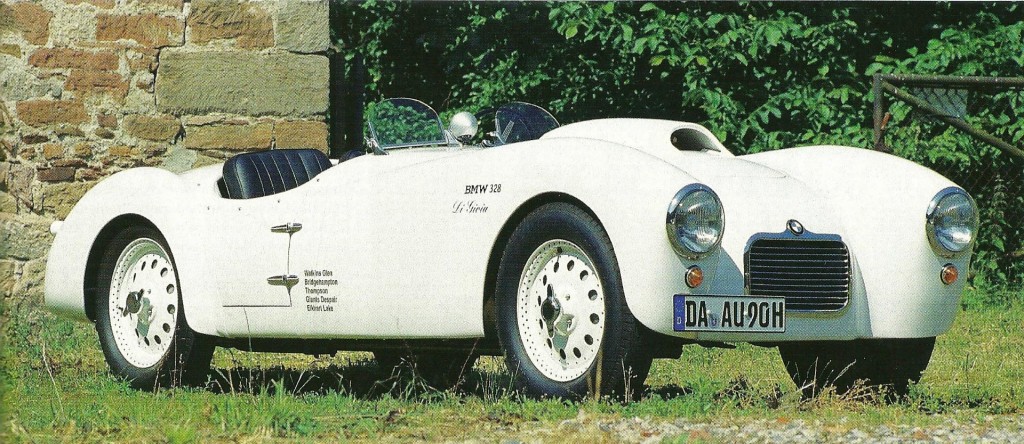


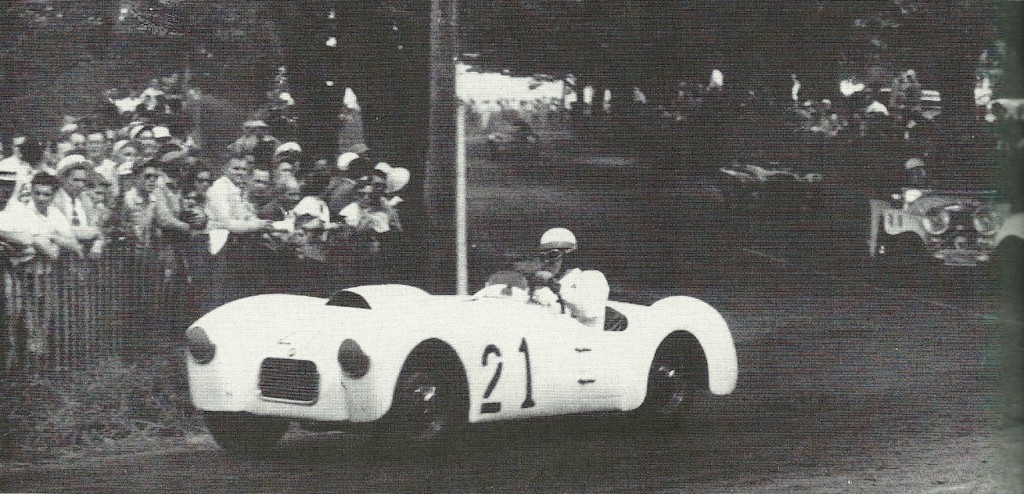

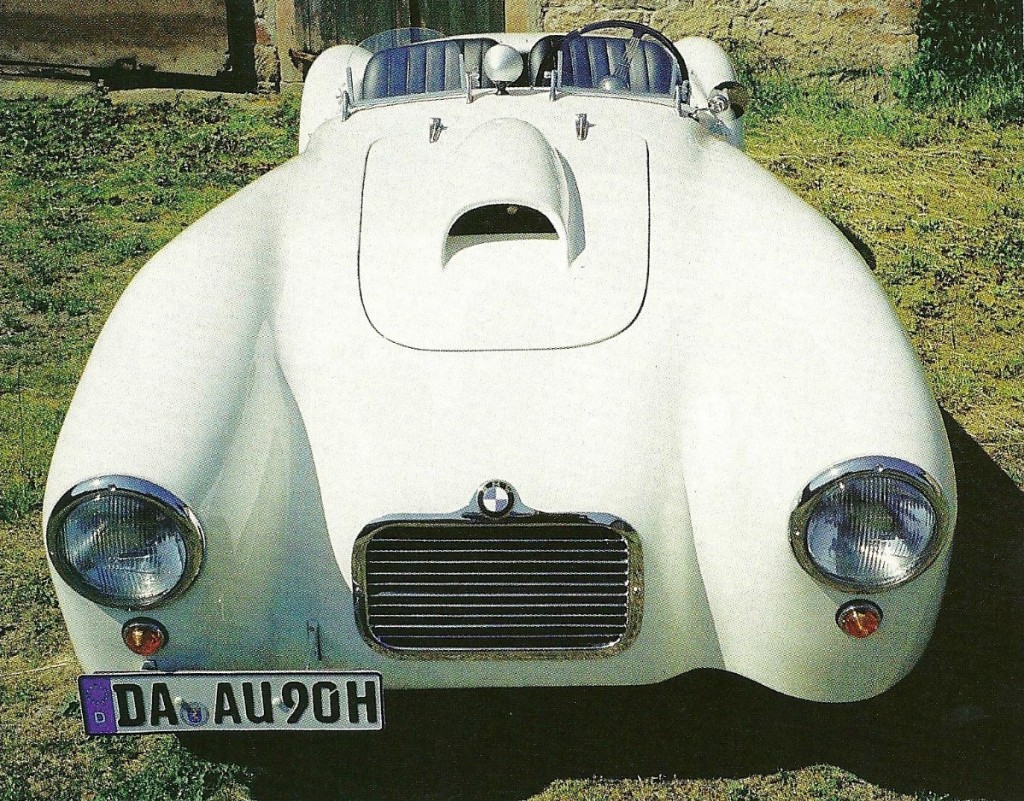

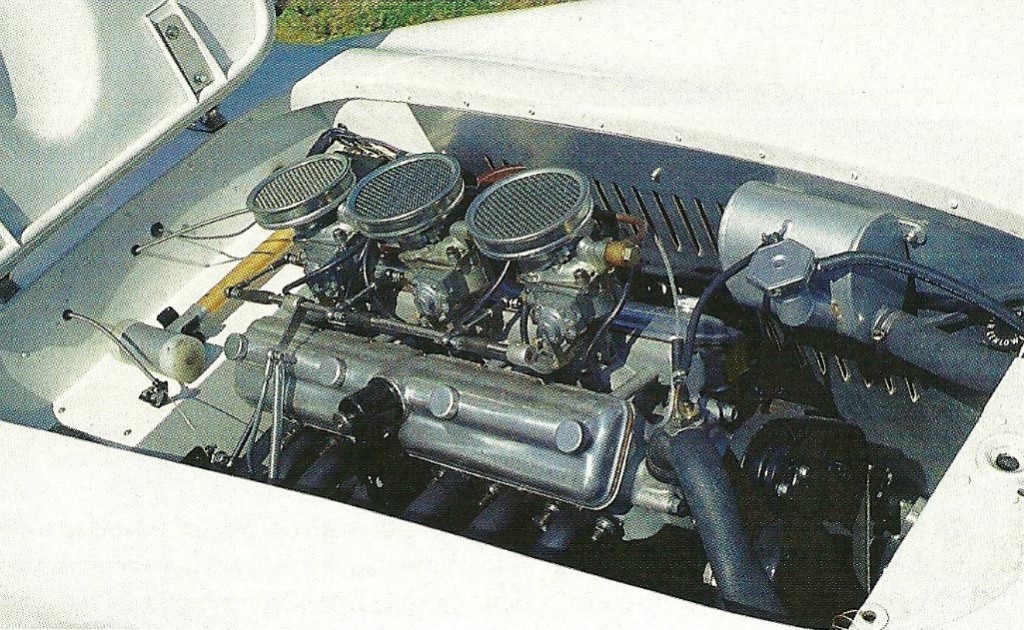


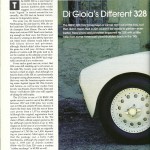

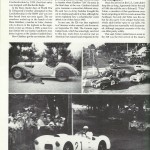
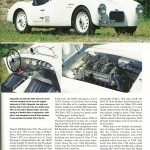
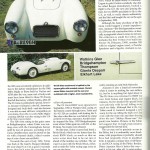
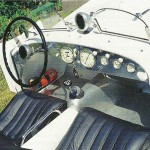
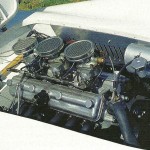
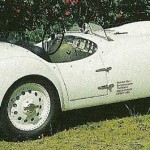

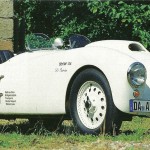
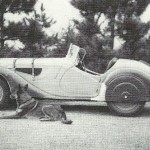

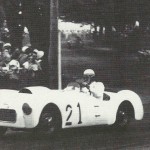
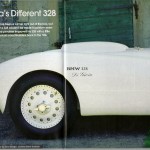
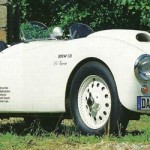
Hi,I am the son of John DiGioia who built the Tobin BMW with his brother Carmen. Can you either forward my information to Kelley DiGioia or provide me his contact info so I can get in touch. This was not the only unique race car the brothers built. When they were stationed in Germany during WWII they built what I believe is probably the first VW race car. I have some great pictures of the car as well as Kelley\’s grandfather with the car.I look forward to hearing from you………..by the way……..great article on the Tobin car.Regards,John Di Gioia
Geoff,
This is incredible but I live just ten miles from Dieter Aumann and know of his
fabulous BMWs yet have never seen this Tobin Special! Guess I need to start
going to the old car club meetings more often! The car is just beautiful!!!
Kenn Brosk
Dear Kenneth,
researching the roots of my family CHLUPACEK I found this article about my uncles’ car (Johann and Alois Chlupacek) and felt very touched! The story of his death remained uncertain – he was declared to be missing during war. Nevertheless it would be also interesting to get in contact with the recent owner, Mr. Aumann. Where does he live?
Kind regards, Birgit Chlupacek (Munich, Bavaria)